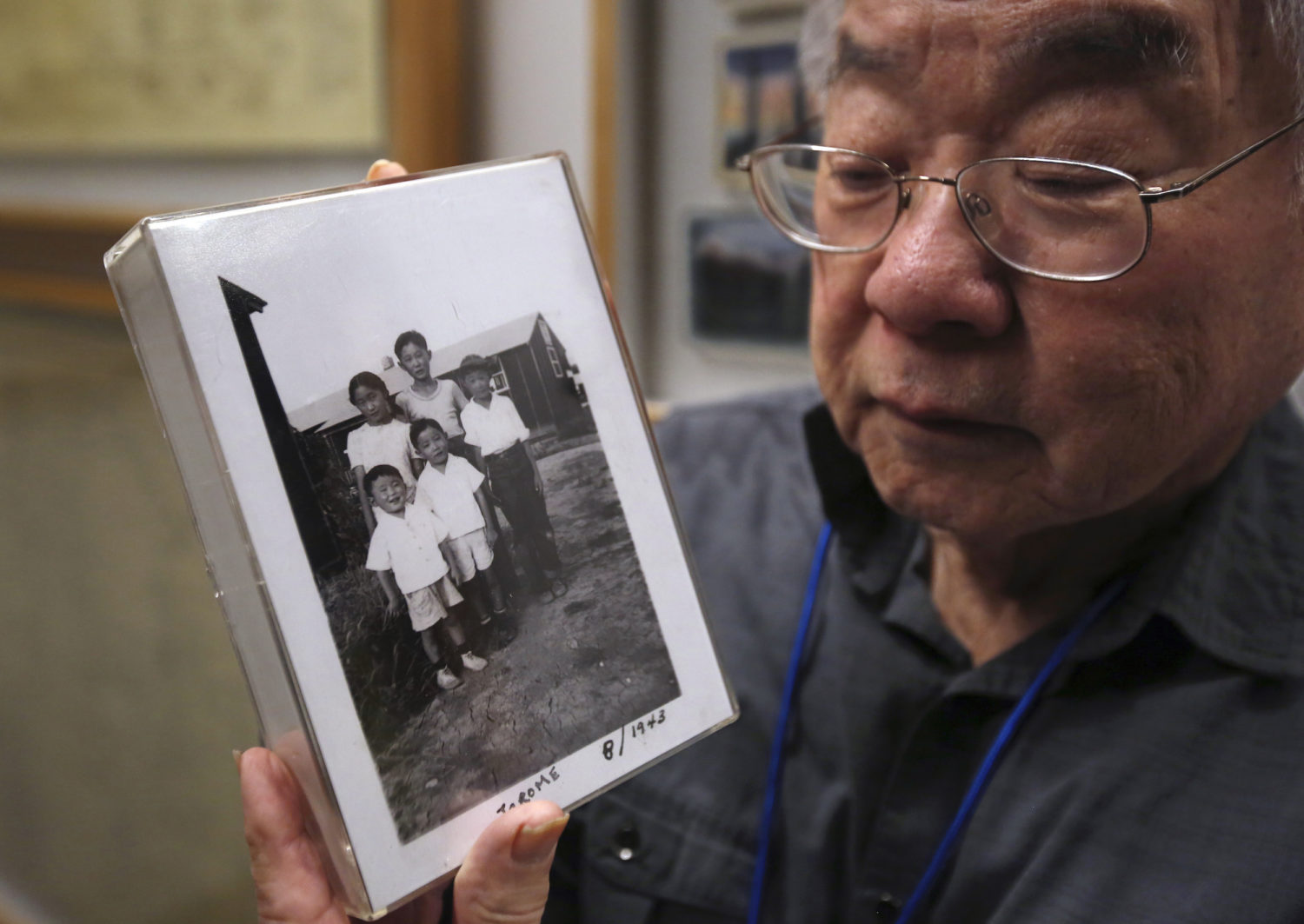This week, California is taking ownership for its role in an ugly chapter in U.S. history that happened nearly eight decades ago.
In 1941, Pearl Harbor was attacked. Weeks later, an executive order forced the detainment of U.S. citizens — primarily people of Japanese ancestry. In California, where two of 10 such camps were located, state legislators want to pass a resolution to officially apologize for their predecessors’ “failure to support and defend the civil rights and civil liberties of Japanese Americans.”
One of the most vocal and well-known survivors is actor George Takei. He often makes the point that the phrase “Japanese internment camps” misrepresents who was in charge of the facilities.
Takei says that some observers, thinking strictly about the rules of grammar, might mistakenly be under the impression that Japan was in charge of the camps. Instead, he wants people to recognize that Japanese Americans were relocated.
And this points to a larger issue: 120,000 people — including women and children such as Takei — were forcibly relocated regardless of age or wealth during World War II. Many were U.S. citizens whose ethnicity led their own government to falsely equate them with a national security threat.
Some of those very detainees had already enlisted in the U.S. military and fought as Americans in the war. One boy who was imprisoned at Heart Mountain in Wyoming grew up to serve as an Army intelligence officer for the United States during the Korean War. Norm Mineta broke racial barriers throughout his life, eventually becoming the first Asian American Cabinet secretary and then calling for the grounding of aircraft on 9/11.
For far too long, the WWII detention has been euphemistically referred to as internment.
With the 78th anniversary of Executive Order 9066 upon us, we as journalists must push for clearer language. We must plainly explain what actually happened in U.S. history.
The U.S. government detained its own citizens. Japanese Americans were imprisoned, not interned. Advocacy groups including Densho say what happened during the war equaled U.S.-run concentration camps. It’s notable that Franklin D. Roosevelt, whose order altered the lives of thousands of families, referred to the sites as concentration camps. Many Americans associate concentration camps only with Nazis, but any facility housing large numbers of a persecuted group meets the definition.
As journalists, we know how powerful language can be. The use of “internment” minimizes what happened. The Associated Press Stylebook does not offer specific guidance. The Asian American Journalists Association’s “Guide to Covering Asian America” does not indicate a preference for a term other than “internment,” but the guide was last updated in 2012. (Disclosure: That update occurred when I was president of AAJA.)
Anyone who sets newsroom standards has the power to enact this change today. If you aren’t the person who sets those standards, you can still be a force for change by raising awareness of the issue. Use this column to provide the justification if someone pushes back to say that “internment” is the more recognized term.
Provide the context around why the camps were detention centers for Japanese Americans, and you’ll not only educate your audience, you’ll be putting the proper weight on a historic injustice.
Doris Truong is Poynter’s director of training and diversity. She can be reached at dtruong@poynter.org.







